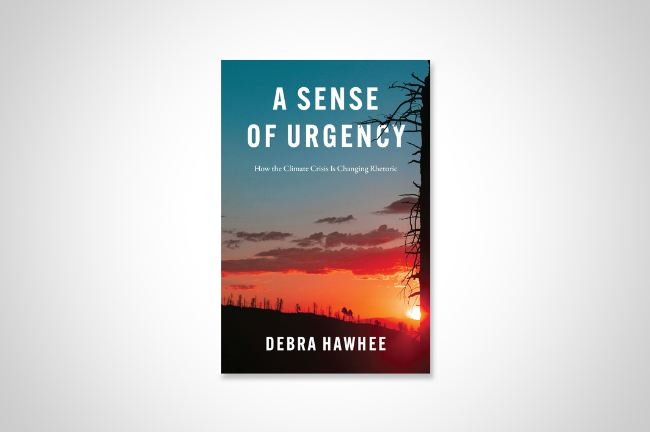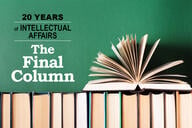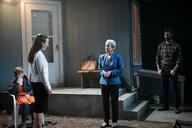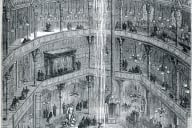You have /5 articles left.
Sign up for a free account or log in.

University of Chicago Press
Rhetoric is a discipline drawing much of its core technical vocabulary from lectures that Aristotle gave 2,400 years ago. Two or three other ancient authors elaborated on his work, and with that, the foundations were laid for a field of study that remained in good stead for two millennia. By the mid-20th century, a re-evaluation of the theoretical patrimony seemed in order, if not long overdue. The modern research university has a passion for novelty, of course, but the real push for renovation came from the outside world—in particular, from the rise of mass media.
Aristotle et al. derived their understanding of persuasiveness and eloquence from analyzing speeches given in court or before a civic assembly. Even the largest audiences hearing such a discourse were within earshot of the orator. But when a single speaker could hold an entire nation spellbound via radio or film, it was time for new tools, or new ways of using the old ones. The American thinker Kenneth Burke (whom I’ve written about a number of times) was the pioneer of retrofitting traditional rhetoric with insights drawn from philosophy, psychology and the social sciences. He maintained that old-school rhetoric focused on the persuasiveness of a discourse, whereas the emerging situation demanded attention to how telecommunications, advertisement and propaganda tried to create a sense of shared identity within what were dispersed heterogeneous audiences. Burke coined the phrase “the new rhetoric” in 1951 and arguably relaunched the discipline itself.
Debra Hawhee previously published an important study of Burke, so it piqued my interest to learn that she had a new book. (The author is a professor of English and communication arts and sciences at Pennsylvania State University.) A Sense of Urgency: How the Climate Crisis Is Changing Rhetoric (University of Chicago Press) is an example of contemporary rhetorical scholarship’s classical moorings (Aristotle remains a colleague, not a relic), as well as its engagement with emerging forms of public communication. Maya Lin’s installation “Ghost Forest,” for example—a grove of almost-dead white cedar trees transplanted to Madison Square Park—manifests a kind of gloomy eloquence; the casualties of salt-water intrusion in their original environment become, in their new setting, witnesses to climate change. Hawhee’s analysis of “Ghost Forest” as a rhetorical phenomenon considers the public discussion of the installation (which was up during the summer and fall of 2021) as well as her own impressions from viewing it in person.
A more traditional sort of rhetorical occasion was the appearance of young activists before the House Select Committee on the Climate Crisis in September 2019. The first statement was by Greta Thunberg, who asked that a 2018 report from the Intergovernmental Panel on Climate Change be submitted as her testimony, then told the committee, “I don’t want you to listen to me. I want you to listen to the scientists.” Hawhee notes that Thunberg’s testimony, clocking in at 52 seconds, received the lion’s share of press coverage—but was, by any other standard, a rhetorical dud, “foreclosing deliberation and sealing itself within scientific data.” The other young speakers that day made better use of their status as witnesses. One spoke of seeing his hometown devastated after “two [once-in-]500-year floods on top of the floods after Hurricane Floyd in 1999,” Floyd having happened before he was born. The future he could imagine was necessarily shaped by a past over which he had no control.
Much of the testimony Hawhee cites is bristling with frustration at what the young speakers experienced as feigned concern by legislators more sincerely responsive to fossil fuel–industry lobbyists. “You are promising me lies,” one witness said. “Everyone who will walk up to me after this testimony saying that I have such a bright future ahead of me will be lying to my face.”
Hawhee emphasizes how the speakers evoke “felt time,” a rhetorical mode that “slides easily between past, present, and future, and by necessity collapses into one big tangle of feeling, a rhetorical mood of bare exhaustion and outrage, a view of the future teetering on the tiny word ‘if.’” (As in, “if it’s not too late.”)
A Sense of Urgency presents four detailed analyses of emerging rhetorical responses to the impact of climate change. Besides the congressional hearing and Lin’s public artwork, there is a chapter on the memorial event for the first Icelandic glacier to melt into nothingness, as well as one on how 2020’s ubiquitous “flattening the curve” graph (promoting timely measures to reduce the impact of COVID-19) influenced appeals for environmental responsibility.
But the introduction and conclusion go beyond the case studies by arguing that contemporary environmental concerns now exert pressure on rhetorical scholarship itself—as did the new forms of communication and public life that drew the attention of Burke and other “new rhetoricians” several decades back.
Perhaps the most concentrated example involves the venerable distinction between chronos, linear time as ordinarily experienced and understood, and kairos, the moment in time when an opportunity presents itself, a crisis reaches its tipping point or a choice must be made. Chronos is time understood quantitatively (“the plodding and incremental time of clocks and calendars,” as Hawhee puts it) while kairos is qualitative time, the time of decisions and points of no return.
Kairos has always been the temporality of greatest concern to rhetoricians. When Hawhee refers to the “felt time” of environmental activists speaking to Congress, it seems as if that time would be kairotic almost by definition. “And yet,” she writes, “in privileging the opportune moment [in their analyses] rhetoric scholars have perhaps made chronos into a vast expanse, treated it as an unexamined, unimportant, neutral backdrop.” It tends to be an afterthought, if even that.
But when the life span of trees is in question, or rates of carbon emission, chronos is a dimension of the matter that must be made explicit, palpable and meaningful to the audience. That is extraordinarily challenging when the scale is even a single human lifetime, let alone anything longer than that. The impact of climate change may push chronos and kairos to converge in ways rhetoricians have not considered previously. “The rapidly changing climate exposes the problems with leaning too much toward the now and the immediate,” she writes, “and asks instead that we find ways to stretch each other’s imaginations so that they can hold open multiple timescales simultaneously, especially the now of action as it relates to the long future of those actions’ implications.”
In this, she is pursuing a line of inquiry that Kenneth Burke suggested in the 1930s. “Among the sciences,” he wrote then, “there is one little fellow named Ecology, and in time we shall pay him more attention. He teaches us that the total economy of the planet cannot be guided by an efficient rationale of exploitation alone, but that the exploiting part must eventually suffer if it too greatly disturbs the balance of the whole.” He made no claim to prophecy, but he could see how a trend might reach the end of the line.




